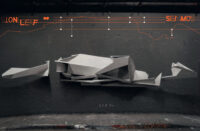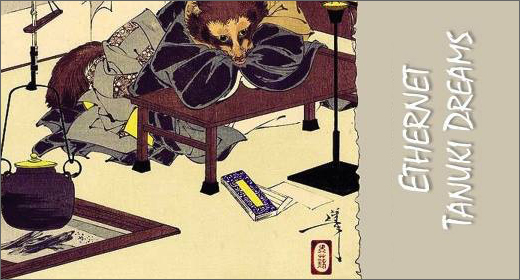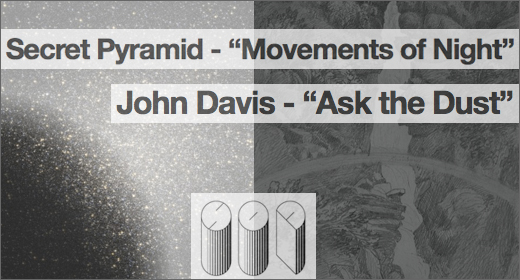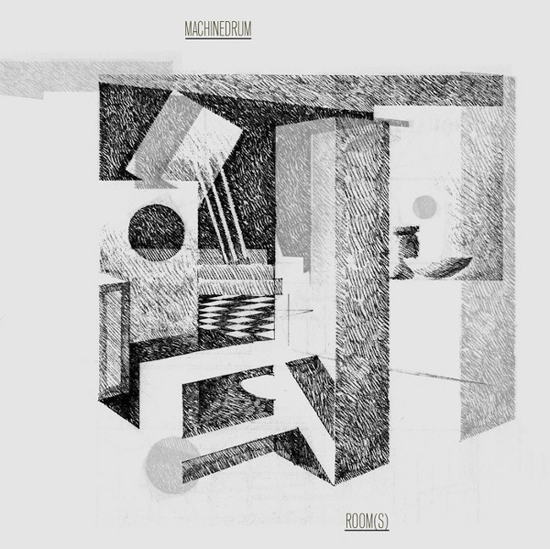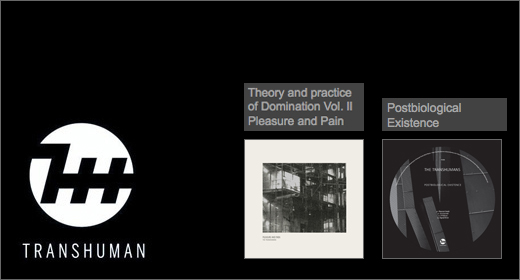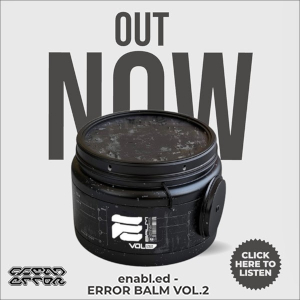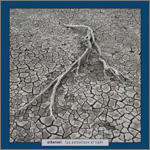
(March 2010) Ethernet man Tim Gray’s dedication of his Master’s thesis to the use of sound for control, healing, and empowerment presages proceedings with a waft of New Age-y discourse; further compounded by blah about his “research and experience in using sound for induction of meditative states,” and seeking to “apply trance-inducing sonic effects to drone-ambient music.” A final laid-on-thick coat of Higher Consciousness blah proposes “the intent […] is to produce an introspective sonic environment conducive to self-healing work and voyaging into new states of awareness.” Allow yourself a wince and an eyeball roll or two, certainly, but there’s no need to run for the heretic hills, for, as a trailer for its sonic orientation, though, it’s a red herring: no overripe spirit-chasing cheese-muzak for Chakra alignment, as might be signalled by the attendant New Age inanity, 144 Pulsations of Light proposes instead a hypnagogue hybrid of ambient-drone and dub-techno with a sprinkle of space-(post)rock to service the mysteries of healing: wall-to-wall washes of synthiness beaten together with borrowed BC-MP techno bass-kicks (thanks, Wolfgang) and spatial effects processing, supplying that all-important hypno-pulse to make the texture-brew bubble a bit – garnished with field recordings from Japan and CA. The intoxicant shimmer throb of “Majestic” and “Vaporous” sites Ethernet on the ambient<->techno continuum over to the left of DeepChord / Echospace, with a distant view of a drifting postrock-drone zone. A hint, perhaps, of a meeting of Steve-spirits – Hitchell hitched to Hillage; or a Kranky-Kosmische konnektion, especially on “Kansai” where the style template is tinctured with neo-psychedelic colours, bringing your Emeralds into line with your Harmonia, if you will. Pulse is subsumed to atmo on the meditative “Summer Insects,” mutating layers of field elements in its texture weave; while whistle and wire-hum conspire with murmur and insect-thrum to enliven the tranquil drift of “Seaside.” Viscous organ-ics deepen the psychoactivity in the extended “Temple,” wherein Gray differently sculpts his field sounds and electronic treatments, stretching them out dark and long within sight of the Nordic iso-chill of Thomas Köner. Predominantly, though, Ethernet traffics in persistent repetition of phases, wrapped in a GASeous gauze, undulating bass pulse, wispy atmospheric ephemera, the JA dub-smoke traded for DE Cosmic haze (Schulze, K. glimpsed through a mist of Voigt, W.). Echoes of everything from Ash Ra Tempel and Eno to any number of Gray’s Kranky-mates in its ingredients, the musical medicine is mixed up sufficiently potently as to be conducive to post-millenial out-zoning, but, returning to the troubling trappings up top, the jury’s out on Dr. Gray’s healing powers. [Listen & Purchase]
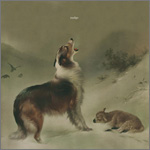
Second full-length by Kranky in-house ‘supergroup’ Nudge is a quite different animal, As Good as Gone being more veiled about any potential psychoactive agenda, and thankfully devoid of designs on our wellbeing. Nudge main man Brian Foote (Fontanelle) consorts again with Paul Dickow (Strategy) and Honey Owens (Valet) a good 4 years on from previous album, Cached. Foote has been busy in the interim as a producer for the Deerhunter axis of projects, and his cross-genre nous is evident in achieving the blend of raw and cooked, live and programmed, that characterizes Nudge. As Good as Gone is peculiar, but not in any rocket science sense: the sound is one of remote synth-spray, scratchy guitar and half-remembered vocals, spidery indie-pop/improv-rock structures grounded in basslines that stand proud in an otherwise low-lying narcotically-tinged wooze. Nudge’s players collectively bespeak a steeping in decades of 70s dub, 80s indie-gaze, and 90s post-rock, this gloss just about covering every track, the devil being in the differentiating detail. Scene-setter “Harmo” hosts woozy harmonica wheeze and thumb piano, synth wibble fleshing out a droney groundswell, Owens’ post-gaze shoe-warble ghosting through a starburst haze, Foote fiddling with some exploratory string-bending before all dissolves. “Two Hands” has a springy bassline bedrock over which ride an ill-tuned Owens, Foote’s wah-wah chops, electronic mood-colours, brushed drums, stretching out more serrated guitar over its scratchy dub-funk lope – even a trace of trumpet from Miles beyond. “Aurolac” has more careless whispers, bass again lean-and-meanly holding in the centre in a reined-in space-jam, infused with aleatory snare fills, rippling guitar strata and a gauze of treatments. On the chill-not-chill of “Tito” Owens’ lazy femme-croon wafts over Dickow’s ever-faithful bassline anchor, the prevailing vibe of drowsy incantation continued with a kind of gruzzy half-skank attended by hit-and-miss insertions from the almost-jamming combo. “Burns Blue” alternates between dirge verse and bliss chorus, moans rising out of a mournful murk, suddenly emerging to iridescent keys before descending again… and repeat. Closure comes with the dreamstate bleakness of “Dawn Comes Light,” wherein patches of silence, befogged whispers, and outland twang’n’strum cede briefly to tides of tempestuous string-swell and chiming steel before subsiding. Nothing groundbreaking or transformative in its parts, and considerably out from the shores of electronic hugged by voyagers around this review site, As Good as Gone nevertheless works something of a spell to cumulatively pull the listener in and along with it, largely by successfully setting its half-formed beats and bouts of held-back near-improv against diversely clouded atmospheres. [Listen & Purchase]
Both releases are out now on Kranky.








